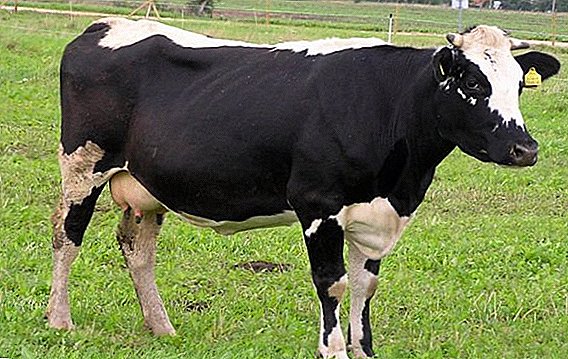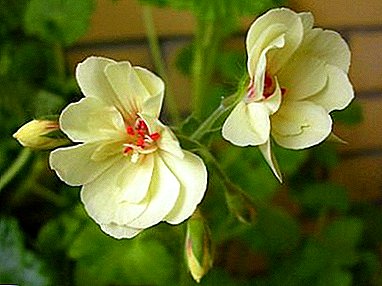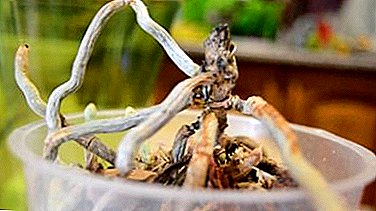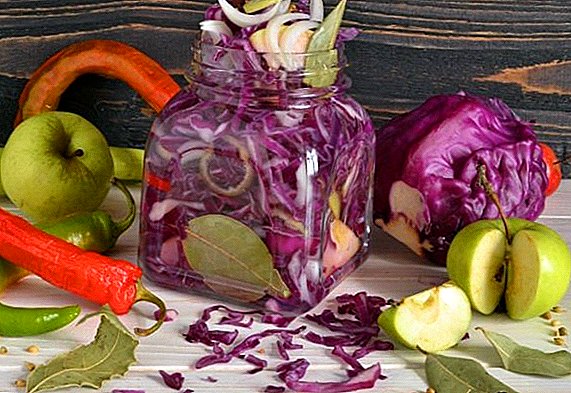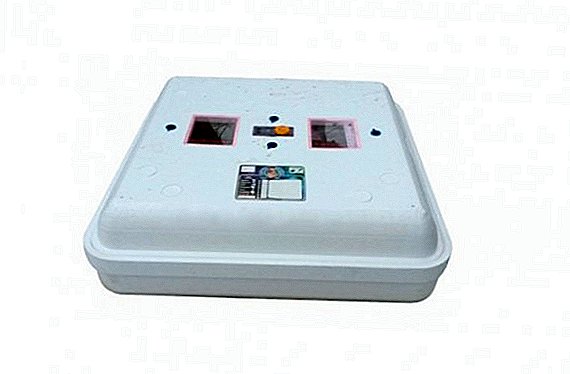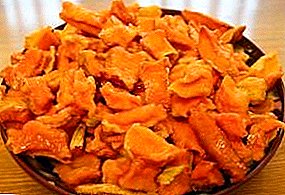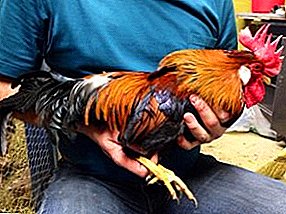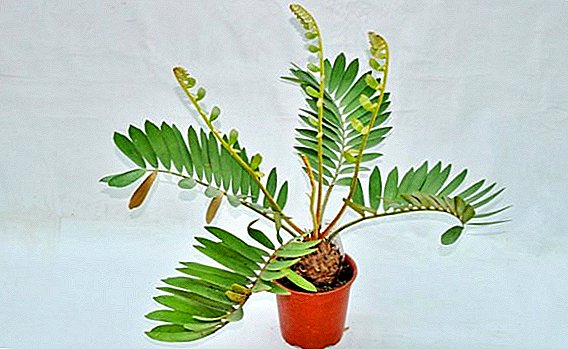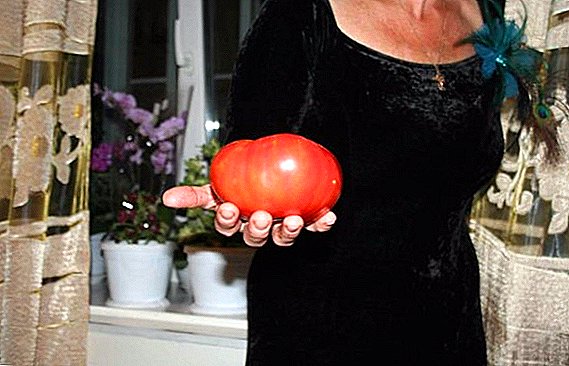 Tomato variety "Hospitable" - one of the best achievements of scientists-agronomists, satisfying modern requirements. The taste qualities of its fruits, precociousness, and unpretentiousness in grooming make it more attractive for gardeners than its relatives.
Tomato variety "Hospitable" - one of the best achievements of scientists-agronomists, satisfying modern requirements. The taste qualities of its fruits, precociousness, and unpretentiousness in grooming make it more attractive for gardeners than its relatives.
This article will help you get the maximum result from the work done.
Description
This variety was invented in Siberia. It withstands temperature fluctuations and lack of light. Fruits are able to grow under any weather conditions.
Bushes
Bushes of tomato "Khlebosolny" determinant. In open ground they grow 0.8-1 m in height. Who planted this variety in a closed soil could observe a trunk of more than 4 m. Under certain conditions, it behaves as an indeterminant one. The branches grow sprawling without staking.
Fruit
Fruits grown from the seeds of the "Siberian Garden", have a color from light red (tomato "Hospitable pink") to bright red. They are round-shaped tomatoes, slightly flattened, the average weight of which ranges from 400 to 600 g. The taste of the pulp is juicy, sweetish. The skin is slightly ribbed, rather dense. This saves the fruit from cracking, as well as from damage during transportation.
Characteristic variety
The considered example concerns mid-season grades. From seedlings to harvest, 114-120 days pass. This variety of tomatoes is salad or used to get juice. It is characterized by high yield and ripening of large fruits - in some cases up to 1000 g.
Important! This variety is resistant to tobacco mosaic virus, fusarium, cladosporia.This feature makes it a favorite of many gardeners.

Advantages and disadvantages
The advantages of "Khlebosolny" should include:
- resistance to small cold snaps, significant for tomatoes;
- the seeds of this variety germinate beautifully with a short duration of daylight hours and have a germination rate close to 100%;
- high and stable fruiting of a bush - up to 5 fruits develop on one branch;
- excellent taste;
- valuable product quality: presentable appearance, large size, wide variations in color - from pink to dark red. All this contributes to its implementation;
- short growing season;
- immunity to disease;
- the possibility of growing in open and closed ground.
The disadvantages of this variety are much smaller, and for experienced gardeners they do not pose a threat:
- sprawling bush needs support, it is necessary to allocate time for its garter:
- it is difficult to preserve the fruits whole, due to their size.

Growing seedlings
For timely planting of seedlings in the ground it is necessary to sow the seeds in a timely manner - approximately 60 days before the planned planting. Works fall to the end of March.
Soil and Seed Preparation
Tomato "Hospitable" prefers a light soil, which can be independently prepared by sifting fresh compost with the addition of humus, sand and earth. It is better to prepare the soil in autumn, place it in a wooden container and leave it to winter in the fresh air.
The finished mixture should be fertilized with microelements. To do this, you will need ashes, potassium sulphate and superphosphate in the proportion 500: 20: 1: 3 for a bucket of soil.
To guarantee high germination, pay attention to the seed manufacturer. The Siberian Garden trademark has proven itself very well.  Any seeds before planting must be processed:
Any seeds before planting must be processed:
- for half an hour put in a weak solution of potassium permanganate;
- rinse in water;
- Prepare a mixture - 0.5 liters of boiling water + 1 tablespoon of ash + 1 g of copper sulphate and 1 g of boric acid. Strain it. After wrapping the seeds in gauze, put them there for 3 hours;
- having taken them out, they are wrapped in a towel and sent to the fridge for a day;
- Then warm up in heat for about 5 hours.
Important! All the time you need to ensure that the seeds remain wet. Parched have poor germination.
Sowing scheme
When sowing it is necessary to adhere to the proportion: 8 g per 1 square meter. Otherwise, the shoots will be weak. The depth should not exceed 2 cm. The boxes are covered with glass or polyethylene and placed in a warm place (+20 ° C).
Seedling care
When shoots appear, the ambient temperature is reduced to +15 ° C by reducing the heating of the radiator or a window is opened. Young sprouts do not like frequent watering - they are rarely poured, but abundantly.  Seedlings of this variety must dive. At the moment of full development of two leaves, the shoots are transplanted into separate peat tanks. They are filled with soil and watered with a weak solution of potassium permanganate. The plant is placed in the recesses and gently pressed with earth.
Seedlings of this variety must dive. At the moment of full development of two leaves, the shoots are transplanted into separate peat tanks. They are filled with soil and watered with a weak solution of potassium permanganate. The plant is placed in the recesses and gently pressed with earth.
Important! In the process of picking, it is necessary to pinch off part of the main root. This will favorably affect the development of an additional root system.Crop tomatoes must be poured over the soil and fertilized with an ash solution every 14 days. From this plant will gain strength faster. For uniform development, containers are illuminated with additional lamps.
Planting and care
It can be grown on any soil.
Terms for tomatoes
According to the description of the variety, the plants are planted in the ground no later than the third week of May, and in greenhouses - at the beginning of May, which makes it possible to achieve a harvest that corresponds to the characteristics of Tomatoes' Tomatoes. Its qualities make it possible not to worry about seedlings during the spring instability of the weather.  This crop prefers loose, fertilized soil. On 1 square meter you can plant 3-4 bush. Middle-grown varieties, which include ours, preferably planted obliquely. At the bottom of the trunk they tear off part of the leaves, plant the plant in the prepared hole and sprinkle it with earth. Such activities will contribute to a stronger root system, which will lead to a strong ground part. Tomatoes are watered with a disinfectant solution and mulched with humus.
This crop prefers loose, fertilized soil. On 1 square meter you can plant 3-4 bush. Middle-grown varieties, which include ours, preferably planted obliquely. At the bottom of the trunk they tear off part of the leaves, plant the plant in the prepared hole and sprinkle it with earth. Such activities will contribute to a stronger root system, which will lead to a strong ground part. Tomatoes are watered with a disinfectant solution and mulched with humus.
How to water
The next watering should be done in a week, depending on the weather. Next, you need to ensure systematic abundant moisture.
Hilling and feeding
Fertilizer bushes carried out in parallel with the irrigation. It is produced twice a month. At different stages of plant growth, various fertilizers are used:
- before flowering, you can flavor the ground with potassium permanganate and add wood ash under the root;
- during fruit set, boric acid and soda are used. Mix 1 g of acid and soda in 1 liter of water;
- throughout the entire growth period, foliar feeding can be produced using copper sulphate - before flowering (2 g per 10 l of water) and superphosphate (50 g per 10 l of water) - when the plants bloom.
 Hilling process is desirable to perform twice:
Hilling process is desirable to perform twice:- during the formation of flowers;
- when ripe fruit.
Formation and garter
Tomato "Hospitable" grows in 1-2 stems. He does not require a pinch. If the plant is placed in a darkened area or in a poorly ventilated greenhouse, it is better to form one stem. This is achieved by removing the lower leaves, and pinch the growth point. Such bushes need support, all spreading branches tie up.
At the end of the season the tops are cut off, this allows the remaining fruits to ripen in time.
Did you know? In the Russian Empire, the tomato was grown as an ornamental plant - the fruit did not have time to ripen completely. Him recognized as a vegetable crop thanks to the agronomist Bolotov AT, who achieved complete ripeness by growing seedlings.

Diseases and pests
The resistance of the variety to late blight and other characteristic diseases of the nightshade has made this variety dominant in the gardens of amateur gardeners.
Tomato "Hospitable" may be affected by aphids, greenhouse whitefly, spider mites and the Colorado potato beetle. You can cope with the first pest by washing the leaves with water with soap and with the rest you have to fight with toxic drugs. This is allowed before the start of fruiting.
Weeding, mulching with straw and disinfection with potassium permanganate solution will help from rot - basal and apical.
You can try the fruits of tomato "Klebarosny" to evaluate the works of the Siberian agronomists. Having planted them on the site, you are convinced of unpretentiousness of this grade and its high productivity.


